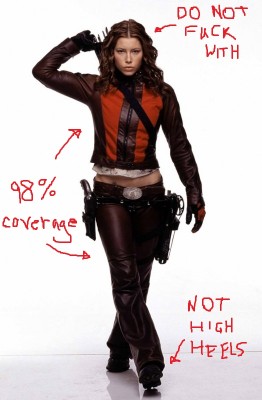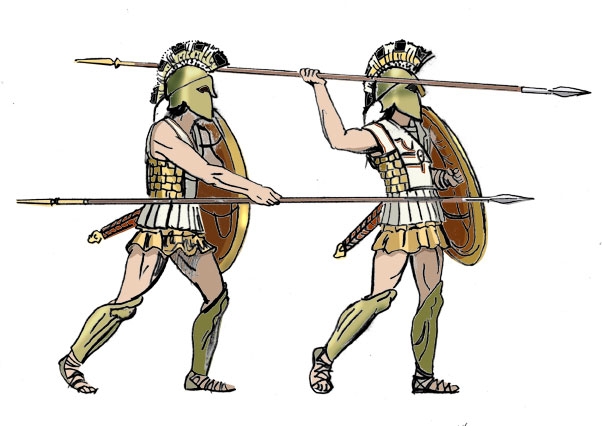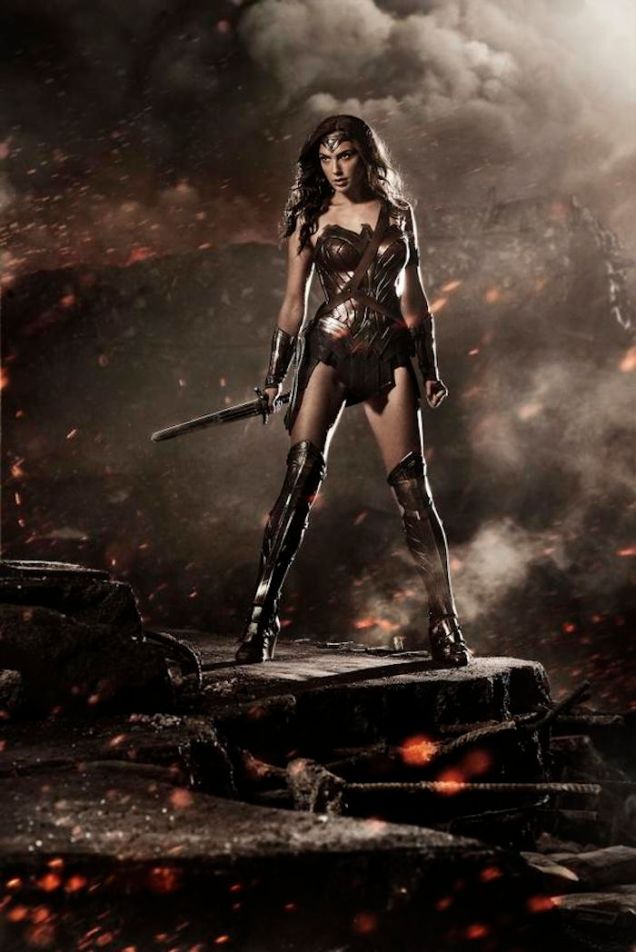Last week, Zack Snyder released the first picture of Gal Gadot as Wonder Woman. The online response has ranged from praise by fans to snarky declarations of the death of sexism to outright rejection. Do we like what we see?
Form and Function
So I don’t want to rip apart Gal Gadot’s body. It annoys me when men — in an attempt to be allies — complain about a model or actor’s body not being attractive or right or whatever — as if their boners are even close to why feminists discuss body issues. Snyder’s choice of Gadot’s fashion model frame, however, does point to what he wants to highlight.
Pop culture’s feminine ideal still puts form before function. Isha Aran of Jezebel was generous when she said Gadot looked “pretty fierce.” She does not project an Amazonian warrior’s power the way, say, Henry Cavill projects Superman’s. A male hero’s form showcases his function, namely his power. Cavill is huge — conspicuously, impractically muscular. In contrast, Gadot’s collarbones and sternum are more defined than her muscles.
The Metaphorical Trap
Wonder Woman’s powers are, of course, magic — like Superman’s. But having a rail-thin person embody that power sets it up to be metaphorical. When Joss Whedon created Buffy the Vampire Slayer, he consciously designed Buffy as the petite blonde who is stereotypically the first to die in any given horror film. Her powers were magic and a metaphor for female empowerment writ large. That was fine and I love Buffy for sure, but the fact that Whedon has cast the exact same female body type in every one of his projects suggests a reticence to embrace actual, literal female power. A metaphor, after all, is a comparison of two unlike things.
 Women may naturally be smaller than men, but women are not naturally bereft of muscle. Just look at Gina Carano, who was a popular fan choice for Wonder Woman. Or Jessica Biel decked out to hunt vampires in Blade: Trinity.
Women may naturally be smaller than men, but women are not naturally bereft of muscle. Just look at Gina Carano, who was a popular fan choice for Wonder Woman. Or Jessica Biel decked out to hunt vampires in Blade: Trinity.
Sidebar: I googled Blade: Trinity to make sure I remembered this correctly. You guys, Jessica Biel was Badass in that film. She took on vampires by herself; she had serious shoulders built for battle; she had guns. She radiated Badassitude, and unlike others (<cough> Carano <cough cough>) she still engaged you emotionally. Holy shit — did I just fall in love with Jessica Biel?
Subject and Object
Comic book editor Janelle Asselin (in a Comic Alliance roundtable that is definitely worth a read) summed up the most common reaction to Wonder Woman’s suit I’ve seen on the intertubes from women (the supposed target demographic here): “There’s nothing about it that makes me furious but there’s nothing that makes me excited.” What vexes are the details that no right-thinking warrior would ever make.
The heels, you guys. Someone show me the army that issues platform heels to its combat troops. And is there anyone who still believes that molding a boobplate to a woman’s body is anything but a disaster waiting to happen?

Image via
“But hoplites and Greeks and 300 and stuff,” says the Zack-Snyder-loving caricature in my brain. Yes, Wonder Woman’s costume has obvious nods to the citizen-soldiers of ancient Greek armies. BUT DO YOU SEE THE SHIELD? Hoplites didn’t need armor to cover their arms and legs (nevermind their chests) because they had huge shields that did the job for them. That makes Wonder Woman’s get-up as practical as your average cosplay. This especially irks because Snyder went to such pains to ground Man of Steel in “reality,” wasting the entire first act on Kryptonian shenanigans, every character wearing a chainmail bodysuit so that, according to costume designer Michael Wilkinson, “by the time we see Superman in his suit we understand why it looks the way it looks.” Yeah sure OK.
He gets more credible by the reality that you can bring to him, you know emotionally, and visually, I think.
– Zack Snyder, re: Superman
Real Talk: A practical Superman would be as naked as possible. He’s powered by the sun.
Putting Things in Perspective
The real difference between a person as object and person as subject is perspective. Does the choice of costume come organically from the character or is it applied to the character by another? When I look at this Wonder Woman, I don’t see choices a warrior would make. I see a male fetish fantasy of female power from the creator of Sucker Punch. That she wasn’t sexualized more can be counted, in illustrator/blogger Angelina L.B.’s words, as “Another little victory: no boob and butt pose. Tiny tiny tiny little victories.” i09’s Charlie Jane Anders laid out months ago her fears of a Zack Snyder Wonder Woman. I see those fears as well-founded. What about you?






I agree. I agree so hard. Wonder Woman is supposed to be a warrior. She should have bulging muscles, especially arms and thighs. And I’m super done with “power shoes.” Heels are uncomfortable, cumbersome, and often dangerous. They exist for the sole purpose of making your legs look good. What super being has time to care about her legs?
Yeah, for reals. I hate that I still hope for things from Snyder. Like, can’t he apply just a little of his worship of hyper-masculine muscle-flesh to the ladies? Just a little? You’d think he’d go for it. Maybe I just hoped he’d go for it.
I believe he comes from the Michael Bay School of Body Imagery.